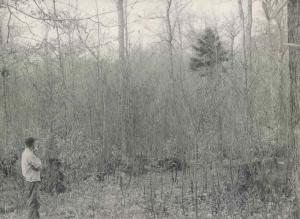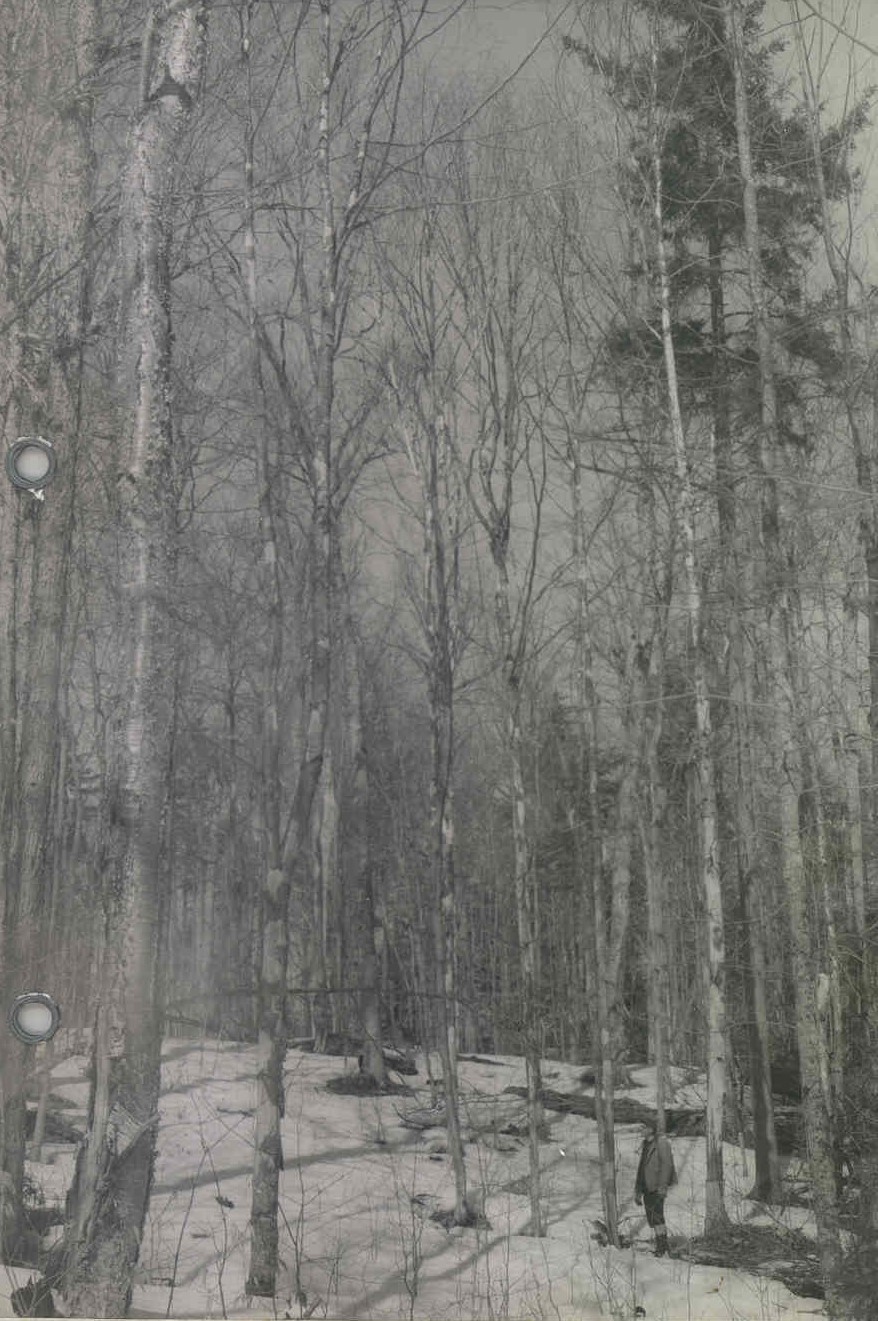| Collection: | Paul Smith Experimental Forest Historical Photo Archive |
| Keywords: |
reproduction personnel |
| Organisms: | hemlock |
| Location: | Paul Smith Experimental Forest |
| Description: | Dense hemlock stands do not encourage the development of either softwood or hardwood reproduction. |
| Date: | 1950 |
| Collection: | Paul Smith Experimental Forest Historical Photo Archive |
| Keywords: |
gap personnel hardwood reproduction |
| Organisms: |
maple beech |
| Location: | Paul Smith Experimental Forest |
| Description: | Large openings encouraged hard maple and beech reproduction. The large trees did not meet current standards of merchantability and were not wanted by the cutters 6 years earlier. Improving markets may permit harvest of some trees in the furture, but others are cull. "Can and should anything be done to help the better saplings? Would there be long-range benefits to compensate for investments made to improve the stand?" |
| Date: | 1950 |
| Collection: | Paul Smith Experimental Forest Historical Photo Archive |
| Keywords: |
personnel stump post-harvest reproduction |
| Organisms: |
beech maple yellow birch |
| Location: | Paul Smith Experimental Forest |
| Description: | The same place after the first cut. Poor quality beech were poisoned 19 months earlier, and were debarked with frill and sodium arsenite for $4.13 per acre. It is anticipated that hard maple and yellow birch reproduction will have a better opportunity to become established without competition from the beech. |
| Date: | 1950 |
| Collection: | Paul Smith Experimental Forest Historical Photo Archive |
| Keywords: |
personnel reproduction |
| Organisms: |
beech maple |
| Location: | Paul Smith Experimental Forest |
| Description: | "On some spots beech were nearly all poisoned. We can compare the results with other compartments where varying numbers of beech were left. Hard maple advance reproduction is abundant here. It is about 14 inches high and 7 years old. Most of those about 3 feet high are beech. What will happen to them?" |
| Date: | 1950 |
| Collection: | Paul Smith Experimental Forest Historical Photo Archive |
| Keywords: |
softwood reproduction old growth pulpwood |
| Organisms: | hemlock |
| Location: | Paul Smith Experimental Forest |
| Description: | There was more advance softwood reproduction here. The large hemlocks exceed 250 years in age and contained too much shake and rot to be cut. Hemlock pulpwood could not be marketed and many sound, pole-size trees also were left by the cutters. |
| Date: | 1950 |
| Collection: | Paul Smith Experimental Forest Historical Photo Archive |
| Keywords: |
swamp reproduction |
| Organisms: | black spruce |
| Location: | Paul Smith Experimental Forest |
| Description: | Black spruce swamp, dry enough to produce merchantable timber within 150 years. |
| Date: | 1950 |
| Collection: | Paul Smith Experimental Forest Historical Photo Archive |
| Keywords: |
reproduction gap |
| Organisms: |
spruce yellow birch red maple |
| Location: | Paul Smith Experimental Forest |
| Description: | On the spruce-yellow birch site, red maple reproduction quickly takes advantage of large openings. |
| Date: | 1950 |
| Collection: | Paul Smith Experimental Forest Historical Photo Archive |
| Keywords: |
pre-harvest reproduction |
| Organisms: |
spruce white pine |
| Location: | Paul Smith Experimental Forest; Compartment 45 |
| Description: | Image taken at coordinates 90-22; direction N55W; distance 139 ft; with a bearing of S80W. Some excellent small timber white pine. Reproduction abundant. Most intermediate and co-dominant spruce are class B and C; this is a very good example of an even-aged stand. |
| Date: | 1950 |
| Collection: | Paul Smith Experimental Forest Historical Photo Archive |
| Keywords: |
pre-harvest reproduction |
| Organisms: |
white pine spruce hemlock |
| Location: | Paul Smith Experimental Forest; Compartment 45 |
| Description: | Image taken at coordinates 91-23; direction N30E; direction N30E; distance 164 ft; with a bearing of due North. Softwood hummock in sub-compartment. Softwood reproduction excellent. Overstory contains white pine, spruce and hemlock. |
| Date: | 1950 |









